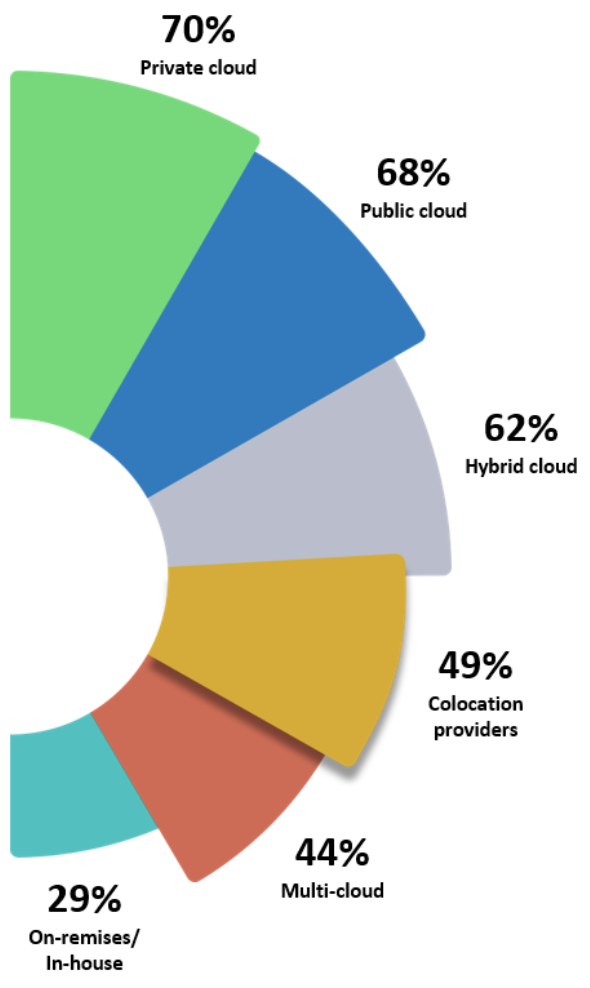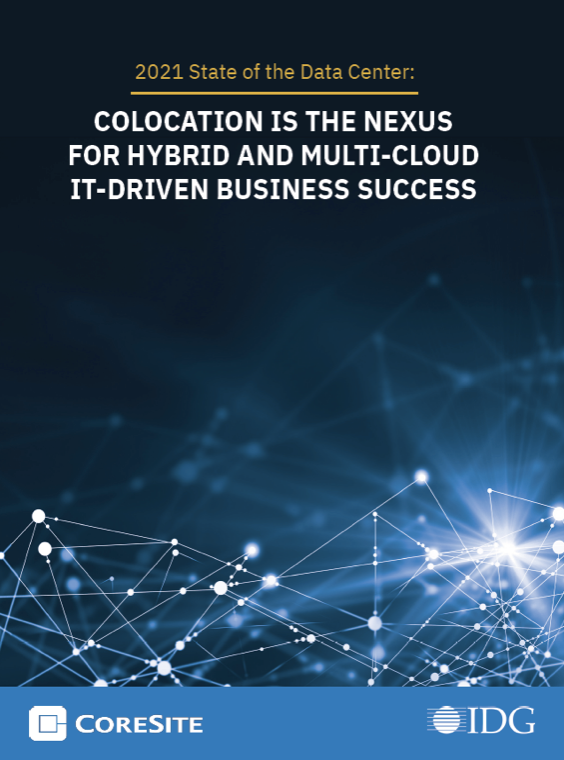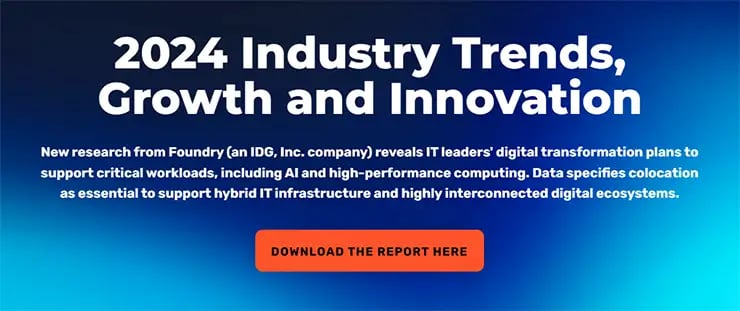
How to Bring Colocation into Your Evolving Hybrid IT Mix – 3 Key Strategies

According to the 2021 State of the Data Center report, the IT infrastructure mix is becoming more diverse. I recently participated in a discussion with John Gallant, enterprise consulting director at IDG Communications, in which we explored the survey results contained in the 2021 State of the Data Center Report. This year’s survey of 300 senior IT leaders is especially important in light of the incredible impact of COVID-19. For many, the global pandemic fast-tracked digital transformation, which also compelled them to rethink their overall cloud strategy. Companies reinvented business processes, adjusted to market shifts and realized how important digital services are to daily operations and competitive advantage.
In a recent report Gartner® predicts that, “by 2025, 85% of infrastructure strategies will integrate on-premises, colocation, cloud and edge delivery options, compared with 20% in 2020. Enterprises are looking for a new architectural approach, a hybrid IT solution that’s diverse. The mix is getting mixier.”¹
The challenge for enterprises is determining the best hybrid cloud mix for their operations and processes – reaching from remote workers to supply chain logistics and customers – while ensuring interoperability and controlling costs.
Looking Ahead with an Eye on Business Outcomes
Now that companies have moved past the radical shift in operations they made to survive, they can focus on achieving better business outcomes. They’ve realized that reducing total cost of ownership (TCO), resiliency and the agility to react when the business environment changes again (as it surely will), as well as to seize new market opportunities, requires what Gallant calls “an intelligent, adaptable three-tier environment of on-premises, colocation and cloud.”
IT leaders say that colocation can help realize the advantages digital transformation promises. According to the report, 93% percent of respondents say colocation can enable digital transformation. Why does that matter? IT leaders already were rethinking their cloud strategy to improve uptime and security, be more agile and adjust investments in personnel and hardware prior to 2020. Compelled to move quickly, they found that colocation fulfilled those priorities and offered the opportunity to downsize their on-premises data centers, diversify network connectivity and put applications into public cloud when it makes good business sense.
In addition, 35% surveyed said that colocation can lower TCO. Here are three reasons why:
- Direct interconnection to major cloud providers can cut costs by as much as 70% for data egress and 50% for network service providers.
- Colocation offers more of a fixed, controlled cost model compared to other OpEx models like public cloud.
- Rather than investing in the hardware that compute-intensive workloads require, which legacy servers often struggle to do, more spend can be allocated to colocation, eliminating future hardware refresh as well as daily operations and maintenance in-house.
How to Get Started
Given the business advantages that bringing colocation into your cloud architecture can bring, the challenge now becomes mapping out an adoption strategy that works for your enterprise. Our advice is to:
- Start small: Don’t try to move everything at once or completely revamp your IT infrastructure. Instead, start with one geographic or functional area and deploy workloads into colocation at your own pace.
- Be strategic: Define and keep the end state in mind but start with an area that can demonstrate value for your organization. Take it from there.
- Conduct due diligence: Not all colocation providers have all the capabilities that you might need. Those that have a large ecosystem of partners and services, as well as native on-ramps to major cloud platforms and networks are best positioned to meet your long-term needs.
Steve Smith, CRO

We understand that making large-scale changes to your infrastructure can be overwhelming. Knowledge and experience will make a big difference. Many of our customers begin with a single cabinet, test for proof-of-concept and then grow their footprint.
I encourage you to take 30 minutes to watch the webcast with IDG’s John Gallant and to learn much more about what senior IT leaders see as the latest trends and way forward for their companies. You can access the webcast and get the full report “2021 State of the Data Center: Colocation is the Nexus for Hybrid IT-Driven Business Success" here.








